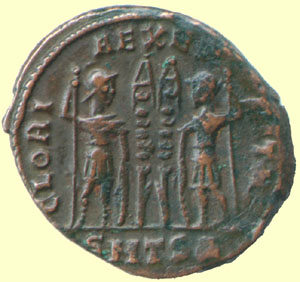
Roman Coins: Example of Aes signatum with an eagle and pegasusīoth the Aes rude and Aes signatum had a very variable weight (from 3 Kg to 3-400 grams) and are often found broken into fragments. They were probably only grooves to facilitate gas release when melting into the mold. The oldest Aes signatum have few irregular traits reminiscent of a dry branch or herringbone. On the top of each piece there was the value and some symbols recalling the authenticity and authority of the issuer. They were bronze pieces of defined, round or rectangular shape. Roman Coins: Examples of Aes Rudes Pieces Coins Online Auction: How does it work?.We also have a large selection of coins for sale. If you are interested in more articles on ancient roman coins please visit at ancient Constantine coins. Brass was considered as double the value of bronze as the former one resembled gold like appearance and was termed as “gold copper.” The last sestertius coins were considered to be minted during the Aurelian. There was a notable difference between brass and bronze for the Romans. These brass coins weighed around 28 grams and had a diameter of 34 mm and were almost 4mm in thickness. Initially they were manufactured at the mint of Rome but when Nero came to power, these coins were produced at the mint of Lyon. However in 23 BC during the reformation of Augustus the coin equaled to the domination of a huge brass coin. Sestertius – This coin was initially a small silver coin priced at one quarter of denarius. Initially with the weight of 4 grams it was supposed to net ten times the asses and hence it was named as “denaris.” Even after their discontinuation, the legacy of these coins continued and was used by Arabs in particular. It was also observed that the last insurance of these coins were in the bronze metal shape and were found in 270 to 275 AD.

Till the middle of the third century the predominance of this coin prevailed but after the launch of the antoninianus this coin was discontinued. For the first century its weight remained around 4 grams but later got degraded to 3.4 under the reign of Nero.

Shop owners to compensate for this lower silver content slowly raised their prices.ĭenarius – The most widely used coin in the Roman Empire and it was made up of silver, minted initially in 211 BC. As the many emperors and rebels paid their soldiers with them, the antoninianus lost even more silver content with every new issue until nearly the entire coin was made of bronze. This coin was highly responsible for increasing inflation as it was a fact that the actual silver usage was just 1.5 denarii. The difference was it was larger and its characteristic trait was that it featured the emperor wearing a crown and hence was valued almost twice that of a denarius. The silver coin looked analogous to the denarius. Initially launched as a silver coin, it was later lowered down to the bronze metallic appearance. These coins were minted from half way through the third century BC till half way through the third century AD.Īntoninianus – This coin, valued at 2 denarii, was brought into play in the Roman Empire by Caracalla in 215.

Some of the most common ancient Roman coins include the aureus (gold), denarius (silver), and the sestertius (bronze).


 0 kommentar(er)
0 kommentar(er)
